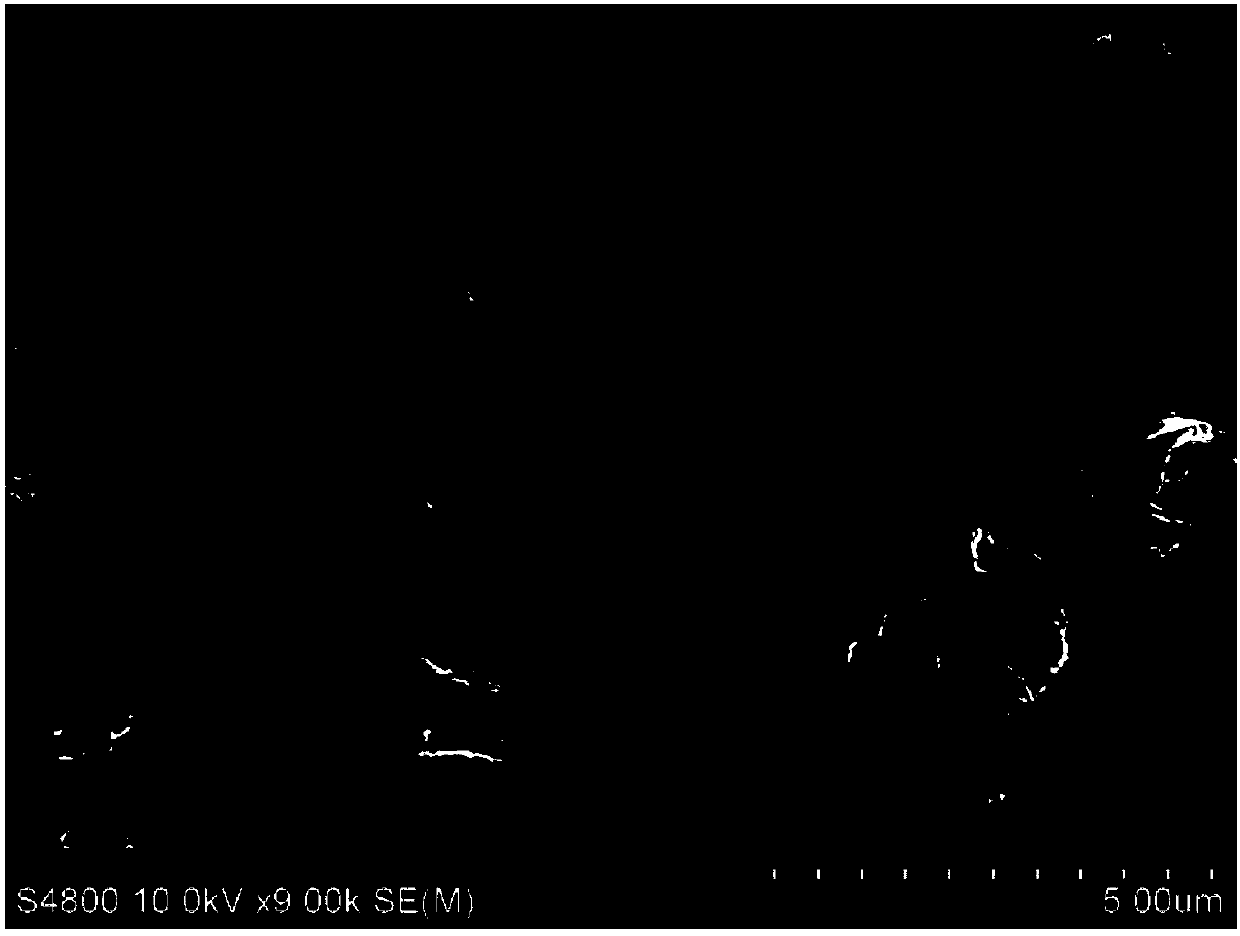Porous carbon nanometer material and preparation method and purpose thereof
A carbon nanomaterial and nanomaterial technology, applied in the field of porous carbon nanomaterials and their preparation, can solve problems such as electrolyte channel blockage, and achieve the effects of improving specific capacitance, wide application and increasing specific surface area.
- Summary
- Abstract
- Description
- Claims
- Application Information
AI Technical Summary
Problems solved by technology
Method used
Image
Examples
Embodiment 1
[0058] Add 1 g of pyrene and 0.2 g of graphene oxide into 50 mL of nitrobenzene, add 3 g of ferric chloride, and react at 80 ° C for 24 hours. After the reaction is completed, filter to obtain a composite of the two, and then mix the composite with 5g of anhydrous zinc chloride was mixed evenly, and transferred to a tube furnace, reacted at 700°C for 3 hours, and after naturally cooling to room temperature, the obtained carbon nanocomposite was washed successively with 5wt% hydrochloric acid, purified water, and tetrahydrofuran, Then put it into an oven and dry at 120° C. for 10 hours to obtain a porous carbon nanomaterial.
[0059] Performance Characterization:
[0060] The specific surface and pore size distribution of the porous carbon nanomaterials are measured by the isothermal adsorption-desorption method of nitrogen at 77K, the specific surface area is calculated by the BET method, and the pore size distribution is calculated by the DFT method. The specific surface are...
Embodiment 2
[0067] Add 1 g of pyrene to 50 mL of nitrobenzene, add 3 g of ferric chloride, react at 80 ° C for 24 hours, filter to obtain a microporous polymer after the reaction, and then mix this polymer with 5 g of anhydrous zinc chloride Uniform, and transferred to a tube furnace, reacted at 700 ° C for 3 hours, after cooling to room temperature naturally, the obtained carbon nanomaterials were washed with 5wt% hydrochloric acid, purified water, tetrahydrofuran, and then put into an oven. °C for 10 hours to obtain porous carbon nanomaterials.
[0068] The porous carbon nanomaterial is measured, and at a current density of 0.5A / g, the specific capacitance is 198F / g; at a current density of 10A / g, the specific capacitance is 169F / g, indicating that the material has high specific capacitance and high Rate performance; after 10,000 cycles at a current density of 10A / g, the specific capacity has no attenuation, indicating that the material has good cycle performance.
[0069] The specific...
Embodiment 3
[0071] Add 1g of coal tar to 50mL of nitrobenzene, add 3g of ferric chloride, and react at 80°C for 24 hours. After the reaction is completed, filter to obtain a microporous polymer, and then mix the polymer with 5g of anhydrous zinc chloride evenly. and transferred to a tube furnace, and reacted at 700°C for 3 hours, and after naturally cooling to room temperature, the obtained carbon nanomaterials were washed with 5wt% hydrochloric acid, purified water, and tetrahydrofuran successively, and then put into an oven and heated at 120°C. Dry for 10 hours to obtain porous carbon nanomaterials.
[0072] The porous carbon nanomaterial is measured, and at a current density of 0.5A / g, the specific capacitance is 214F / g; at a current density of 10A / g, the specific capacitance is 182F / g, indicating that the material has high specific capacitance and high Rate performance; after 10,000 cycles at a current density of 10A / g, the specific capacity has no attenuation, indicating that the mat...
PUM
| Property | Measurement | Unit |
|---|---|---|
| Specific surface area | aaaaa | aaaaa |
| Aperture | aaaaa | aaaaa |
| Specific surface area | aaaaa | aaaaa |
Abstract
Description
Claims
Application Information
 Login to View More
Login to View More - R&D Engineer
- R&D Manager
- IP Professional
- Industry Leading Data Capabilities
- Powerful AI technology
- Patent DNA Extraction
Browse by: Latest US Patents, China's latest patents, Technical Efficacy Thesaurus, Application Domain, Technology Topic, Popular Technical Reports.
© 2024 PatSnap. All rights reserved.Legal|Privacy policy|Modern Slavery Act Transparency Statement|Sitemap|About US| Contact US: help@patsnap.com










